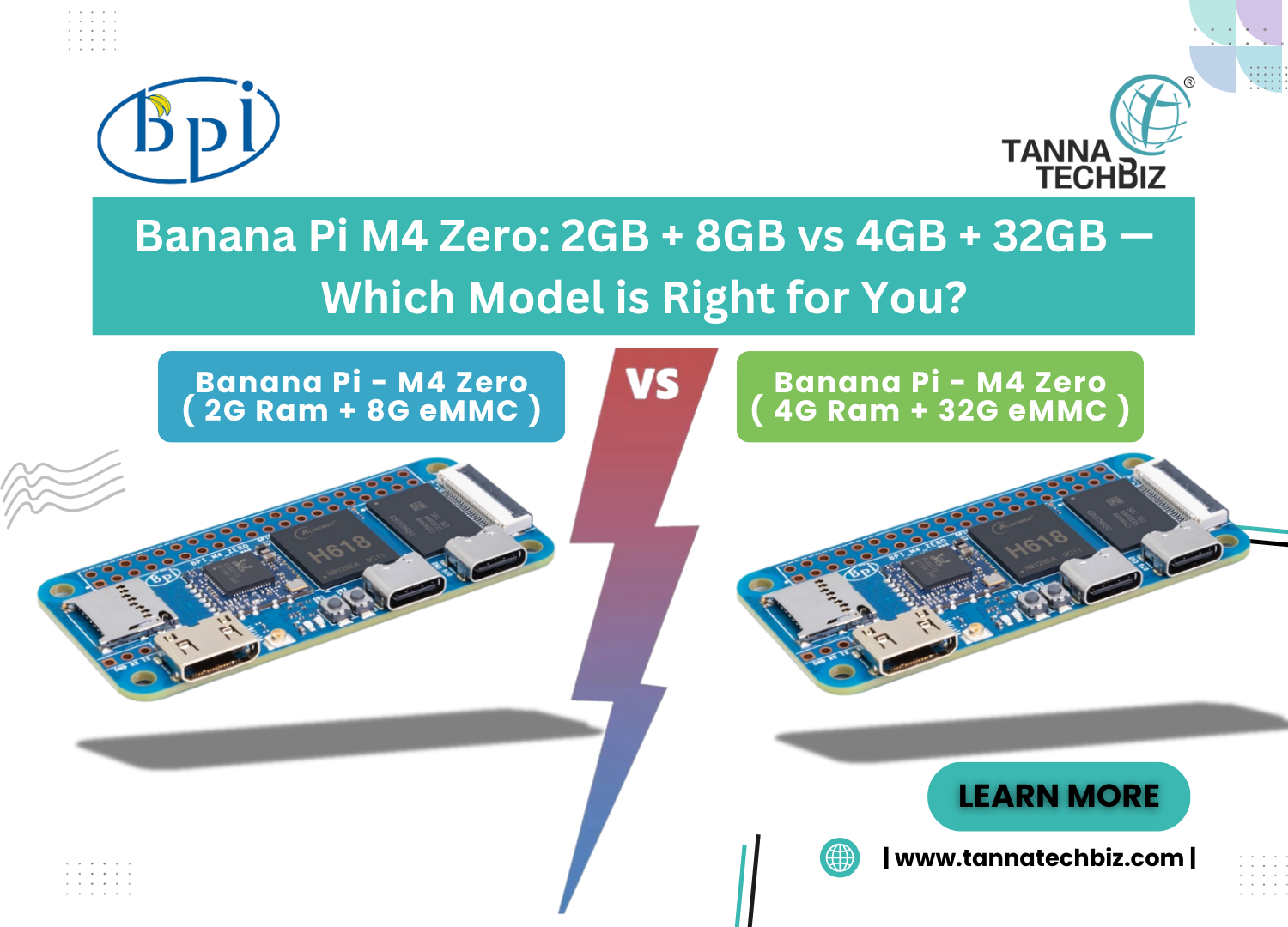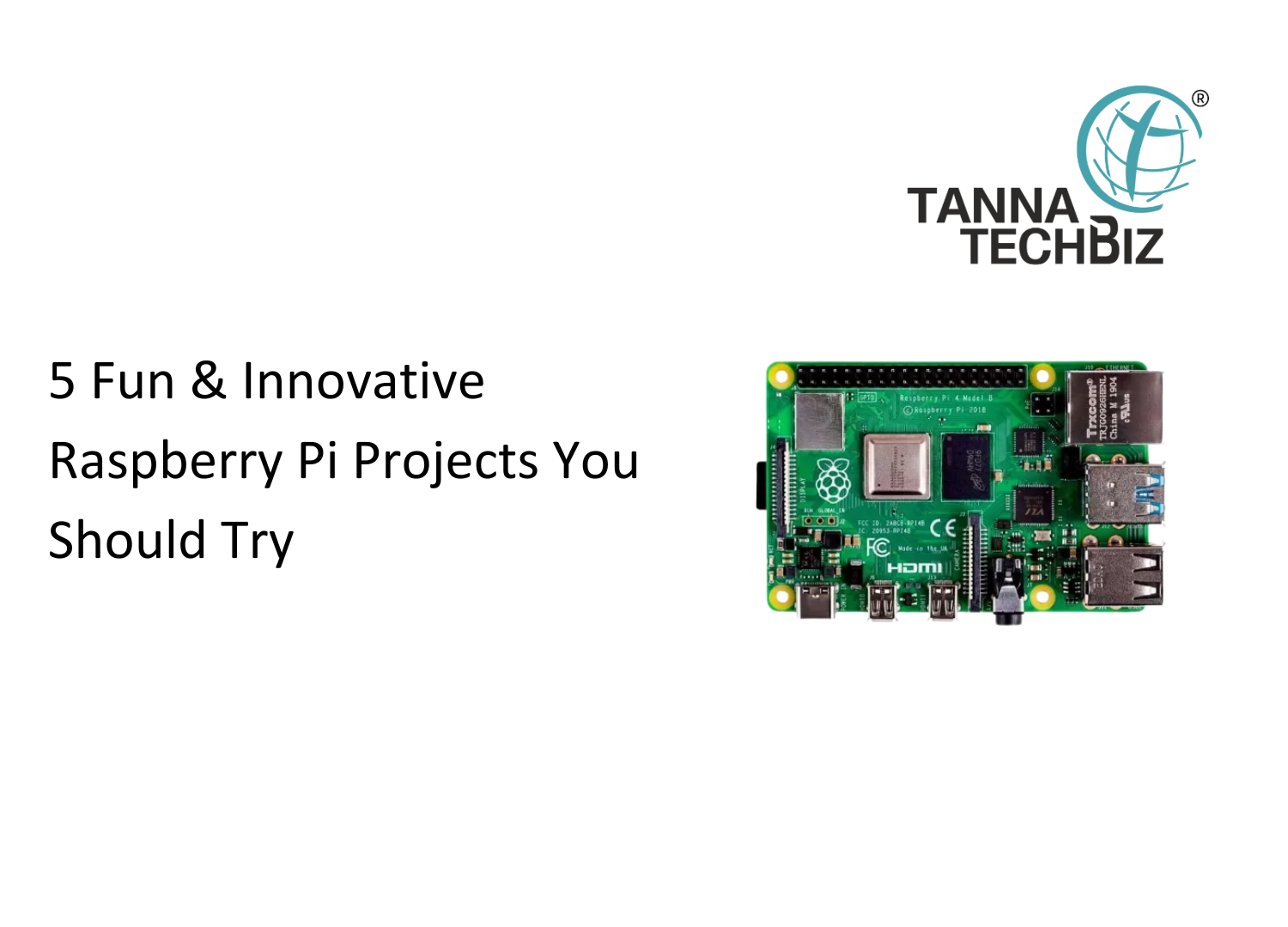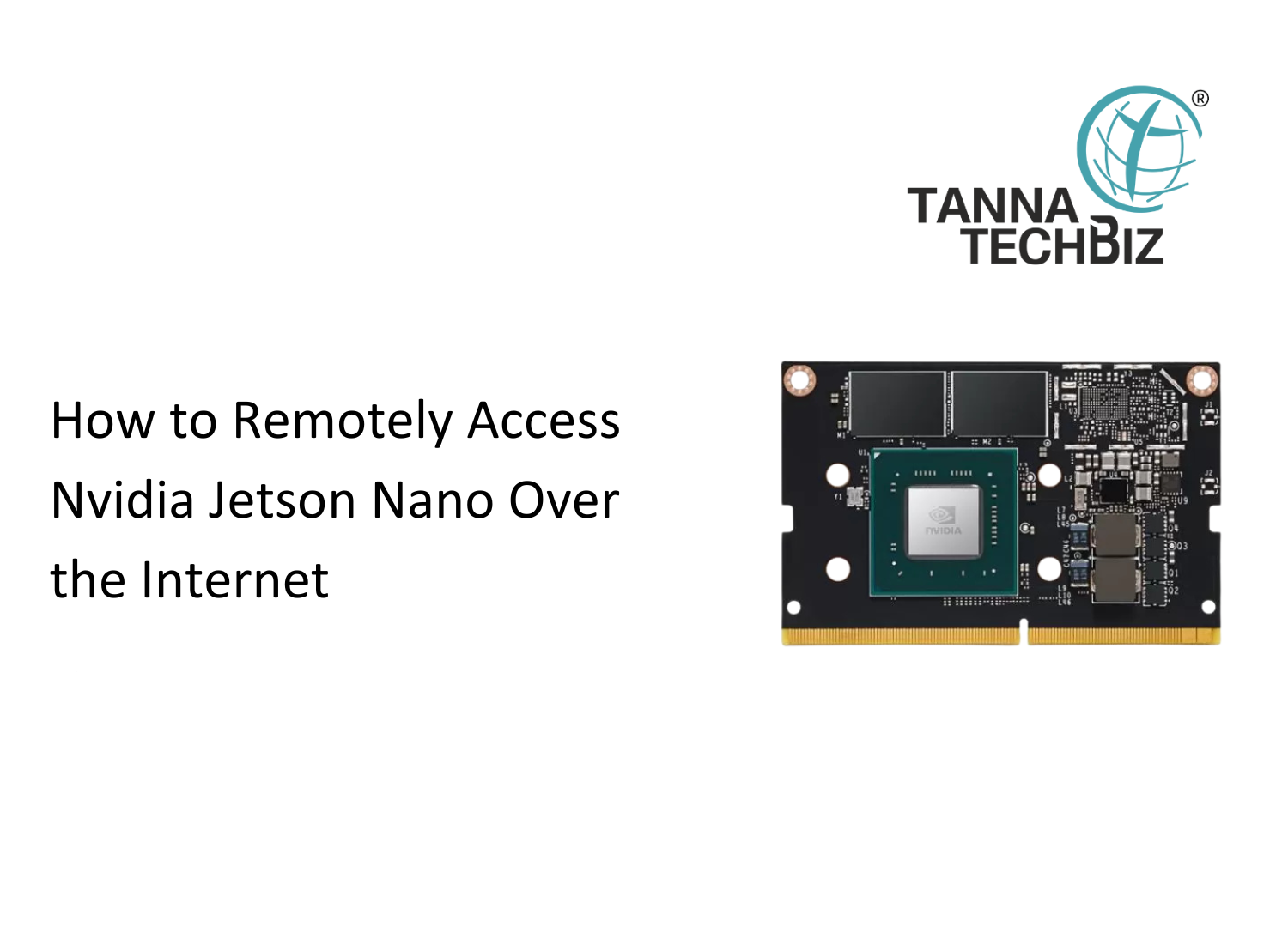Banana Pi M4 Zero: 2GB + 8GB vs 4GB + 32GB — Which Model is Right for You?
May 27, 2025 276

Banana Pi M4 Zero: 2GB + 8GB vs 4GB + 32GB — Which Model is Right for You?
The Banana Pi BPI-M4 Zero is a compact and powerful single-board computer designed for edge computing, smart devices, and embedded applications. Whether you’re building a home automation system, a portable media player, or a compact Linux workstation, the M4 Zero has the flexibility to meet your needs.
But with two variants available – one with 2GB RAM + 8GB eMMC and the other with 4GB RAM + 32GB eMMC – which one should you choose?
In this blog, we’ll compare both models side by side and help you choose the right one for your project.
Product Overview
| Feature | BPI-M4 Zero (2GB + 8GB) | BPI-M4 Zero (4GB + 32GB) |
|---|---|---|
| CPU | Allwinner H618, Quad-core ARM Cortex™-A53 processor, 64-bit, up to 1.5GHz | Allwinner H618, Quad-core ARM Cortex™-A53 processor, 64-bit, up to 1.5GHz |
| GPU | ARM Mali G31 GPU | ARM Mali G31 GPU |
| Memory | 2 GB LPDDR4 | 4 GB LPDDR4 |
| Storage | 8G eMMC flash | 32G eMMC flash |
| SD card | MicroSD card slot, SDIO3.0 | MicroSD card slot, SDIO3.0 |
| Wireless | 2.4G/5G WiFi and Bluetooth 4.2 | 2.4G/5G WiFi and Bluetooth 4.2 |
| HDMI | 1x miniHDMI 2.0a (up to 4K@60Hz with HDR10, CEC, DDC, SCDC), HDMI digital Audio output | 1x miniHDMI 2.0a (up to 4K@60Hz with HDR10, CEC, DDC, SCDC), HDMI digital Audio output |
| USB | 1x USB2.0 Type-C HOST, 1x USB2.0 Type-C OTG | 1x USB2.0 Type-C HOST, 1x USB2.0 Type-C OTG |
| 40-pin header | 28 pins GPIO and Power (+5V, +3.3V and GND) | 28 pins GPIO and Power (+5V, +3.3V and GND) |
| UART, SPI, TWI/I²C, PWM, PCM/I²S | UART, SPI, TWI/I²C, PWM, PCM/I²S | |
| 24-pin FPC | 0.5mm pitch FPC connector, 1x USB2.0, 1x IR, 1x 100Mbps Ethernet | 0.5mm pitch FPC connector, 1x USB2.0, 1x IR, 1x 100Mbps Ethernet |
| 9 pins GPIO, UART,TWI/I²C, PWM, PCM/I²S | 9 pins GPIO, UART,TWI/I²C, PWM, PCM/I²S | |
| Buttons | Reset, FEL | Reset, FEL |
| LED | Power Status and Activity status | Power Status and Activity status |
| Power | 5V@3A via USB Type-C | 5V@3A via USB Type-C |
| Size | 65mm × 30mm | 65mm × 30mm |
Performance Breakdown
RAM (2GB vs 4GB)
- The 2GB version is perfect for lightweight applications, headless setups, and small server tasks.
- The 4GB version is ideal for full desktop environments, multitasking, and running memory-intensive applications like TensorFlow Lite, OpenCV, or Docker containers.
eMMC Storage (8GB vs 32GB)
- 8GB can get tight after installing the OS and some libraries, forcing you to rely on a microSD card.
- The 32GB eMMC provides enough space for your OS, applications, logs, and updates without hitting the storage limit.
Best Use Cases
| Use Case | Recommended Model |
|---|---|
| IoT Device or Sensor Node | 2GB RAM + 8GB eMMC |
| Media Streaming / 4K Playback | 4GB RAM + 32GB eMMC |
| Personal Linux Desktop | 4GB RAM + 32GB eMMC |
| Retro Gaming Console (emulation) | 2GB (basic), 4GB (smooth) |
| AI Projects at the Edge | 4GB RAM + 32GB eMMC |
| Lightweight Web Servers | 2GB RAM + 8GB eMMC |
| Robotics & Computer Vision | 4GB RAM + 32GB eMMC |
Software Support
Both models support a wide range of operating systems and frameworks, including:
- Linux Distributions: Armbian, Debian, Ubuntu
- Android Support (SDK available via Banana Pi GitHub)
- Development Frameworks: Python, Node.js, C/C++, OpenCV, TensorFlow Lite
- IoT & Automation Tools: Home Assistant, MQTT, Docker
For OS images and documentation, visit the official page:
Banana Pi M4 Zero Downloads & Docs
Final Verdict: Which One Should You Choose?
If you're working on a tight budget or just need a device for simple IoT, automation, or headless computing, the 2GB RAM + 8GB eMMC version is a good start.
However, if your project involves:
- GUI-based interface
- Development with large packages
- Media playback
- Multi-container environments
...then the 4GB RAM + 32GB eMMC model offers much better performance and future scalability.
Our Recommendation
| User Type | Ideal Choice |
|---|---|
| Beginner / Hobbyist | 2GB + 8GB |
| Developer / Engineer | 4GB + 32GB |
| Smart Product Builder | 4GB + 32GB |
| School / STEM Projects | 2GB + 8GB or 4GB + 32GB (based on use) |



